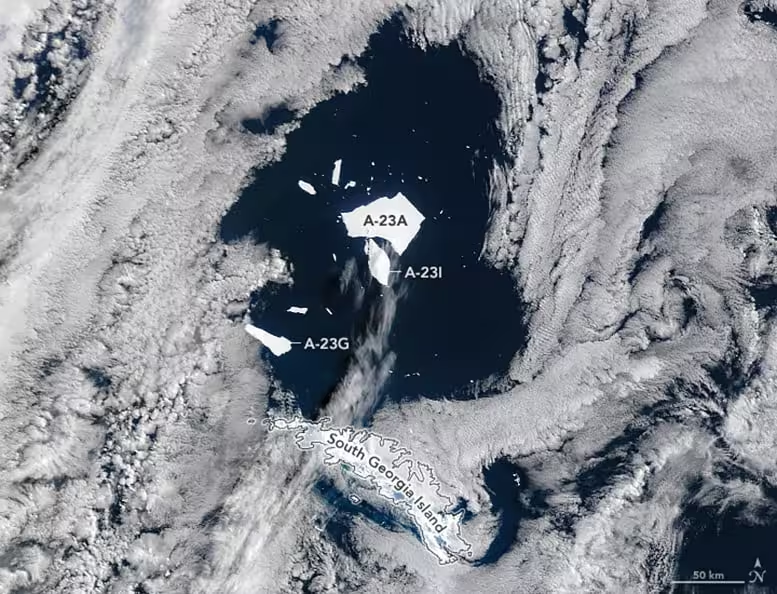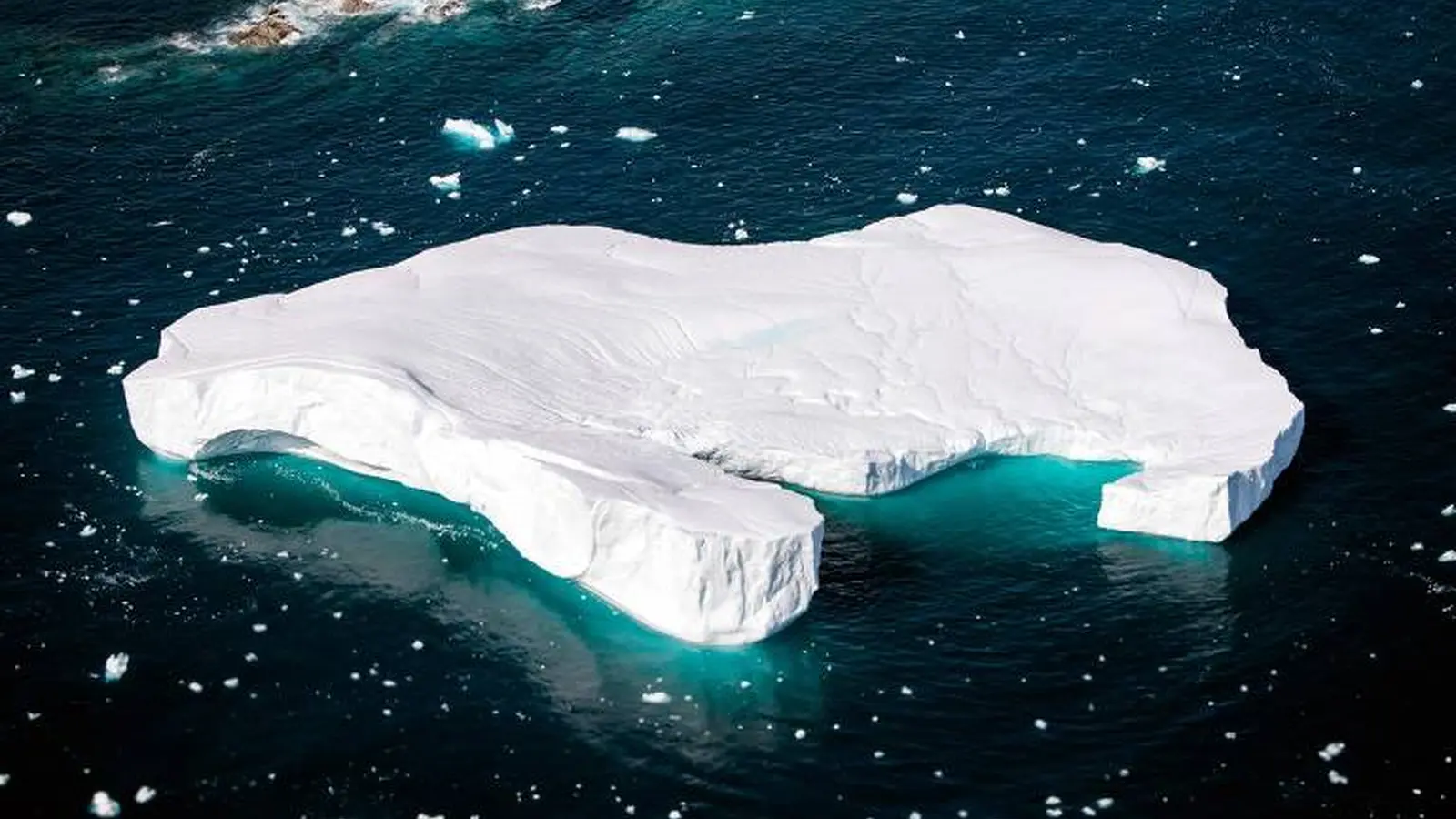4 Minuten
A giant iceberg breaks apart
Iceberg A-23A, once one of the largest and longest-lived tabular icebergs to emerge from Antarctica, is rapidly disintegrating as it drifts into warmer Southern Ocean waters. NASA satellite imagery captured the iceberg’s ongoing fragmentation, documenting a dramatic loss of area as the berg sheds large named fragments and thousands of smaller pieces. What began as a massive sheet that calved from the Filchner Ice Shelf in 1986 has spent decades grounded, then mobile, and is now approaching the end of a long, episodic journey northward.
Satellite observations and monitoring methods
On September 11, 2025, NASA’s Terra satellite, equipped with the MODIS (Moderate Resolution Imaging Spectroradiometer) sensor, acquired images showing A-23A breaking into multiple large pieces. At that time, the largest remaining section measured just over 1,500 square kilometers (about 580 square miles), making it the world’s second-largest floating iceberg then observed. Other significant fragments visible in the imagery included A-23G (approximately 324 sq km) and A-23I (about 344 sq km).
How scientists detect and track bergs
Researchers rely on a mix of remote-sensing tools to monitor Antarctic icebergs. MODIS provides near-daily, wide-area coverage that is excellent for tracking the positions and broad outline of large icebergs. Higher-resolution optical instruments, such as those on Landsat satellites, can resolve smaller fragments under favorable weather. Synthetic aperture radar (SAR) sensors are particularly valuable because they can image ice in darkness and through cloud cover, enabling continuous monitoring throughout polar seasons. The U.S. National Ice Center assigns names to Antarctic icebergs that meet size thresholds and maintains a catalog used by researchers and mariners.
Scientific context: A long and unusual voyage
A-23A’s history is notable. After calving in 1986 from the Filchner Ice Shelf, it remained grounded on the southern Weddell Sea floor for decades. It began moving more freely in the early 2020s, and in March 2024 it became entrained in a rotating ocean vortex in the Drake Passage. The berg later grounded south of South Georgia Island in May 2025 before finally breaking free and drifting north of the island, where the most recent satellite observations show it fragmenting under the influence of warmer air and ocean temperatures.

Scientists who first flagged these breakups include Jan Lieser of Australia’s Bureau of Meteorology and Christopher Shuman of the University of Maryland (retired); subsequent confirmation and tracking were provided by Britney Fajardo of the U.S. National Ice Center using MODIS imagery. As Lieser noted, 'We can see and monitor these large icebergs quite well with spaceborne sensors,' but he emphasized that the larger tabular pieces often shed thousands of smaller bergs that are harder to track yet pose significant risks.
Hazards and implications
The breakup of A-23A has practical and scientific consequences. Smaller icebergs and growlers shed from a parent berg can drift into shipping lanes and fishing grounds, creating collision hazards for vessels. For climate and oceanography, the fragmentation and subsequent melting of large icebergs influence freshwater input into the Southern Ocean, local circulation, and nutrient distribution—factors that affect marine ecosystems and regional sea-ice formation. Monitoring iceberg trajectories helps forecast potential impacts on maritime safety and coastal environments.
Expert Insight
Dr. Elena Morales, a polar oceanographer (fictional for this piece), commented: 'Large tabular icebergs like A-23A act as both indicators and drivers of regional change. Their breakup patterns reflect ocean heat and currents, and when they melt they redistribute freshwater and nutrients across the Southern Ocean. Combining daily MODIS coverage with targeted SAR and Landsat observations gives us the best chance to understand and anticipate where fragments will travel.'
Conclusion
The disintegration of Iceberg A-23A illustrates the combined power of long-term field knowledge and modern remote sensing. As the berg continues to shed large and small fragments, sustained satellite monitoring—MODIS, Landsat, SAR platforms, and operational tracking by agencies like the U.S. National Ice Center—remains essential for scientific study and for warning maritime stakeholders. A-23A’s final breakup is a reminder of the dynamic Antarctic environment and the importance of coordinated observation for safety and research.
Quelle: scitechdaily


Kommentar hinterlassen